The Welsh car built by miners but fit for a king
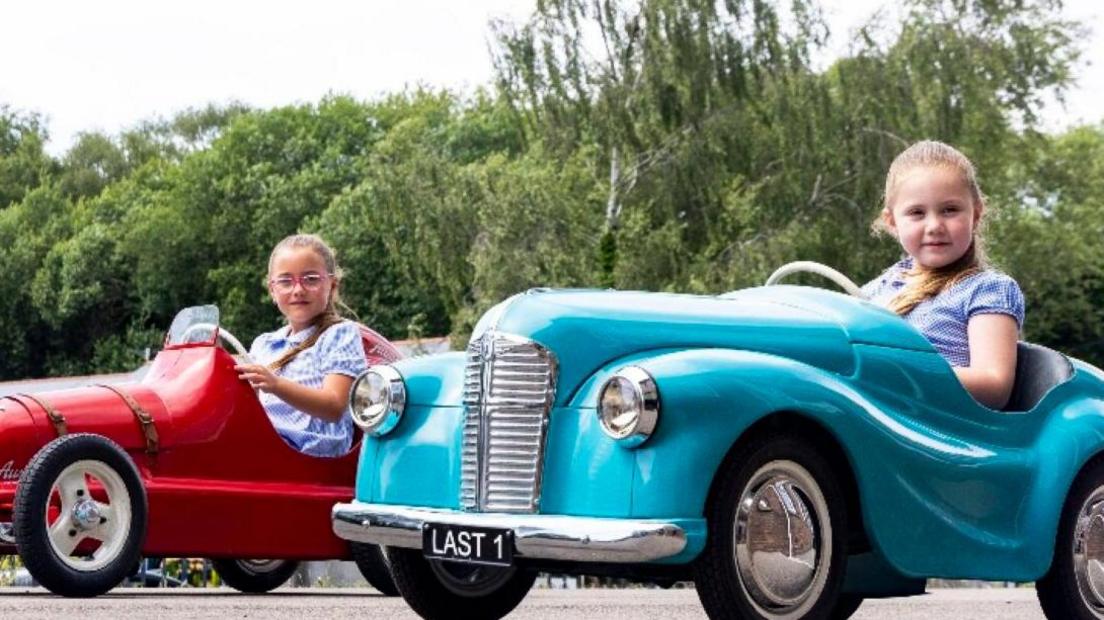
These were the two last pedal cars crafted at the Bargoed factory
- Published
If you were a child in the mid-20th Century, the odds are you hankered after an Austin Pedal Car.
Over the course of 22 years one pedal car company helped revive both the economy and the wellbeing of miners suffering from lung disease.
They were manufactured in Bargoed, Caerphilly county, between 1949 and 1971 by miners who contracted respiratory problems underground and were commonly referred to as the Rolls Royce of children's vehicles.
King Charles received one for his fourth birthday and they came in two versions - the single-seater Pathfinder and the roomier J40 - both featuring working lights and horn, a fastidious replica of an Austin engine and a boot which could hold more than budget airlines allow in hand luggage.
Now the incredibly versatile workforce has been remembered with a blue plaque near the site where the factory once stood.
The plaque was funded by the Austin Pedal Car Company - a successor firm that revived the brand in 2020 and will be displayed at Tir-y-Berth Primary School, the nearest point to the site of the former factory.
World's first 150mph car returns to beach where it broke record
- Published20 July
Great Bibles reunited for first time in 500 years
- Published25 June
Blue plaque honour for Richard Burton and mentor
- Published11 July
Dr David Whyley took a deep dive into the history of the cars in his book The Austin Pedal Car Story.
He said: "In 1945 David Grenfell, MP for Gower, who himself had worked in mining, proposed a scheme to rehabilitate miners suffering from pneumoconiosis, external, and the newly elected Labour government backed his idea.
"It was important that the work wasn't too arduous for the men, but that it should be profitable and meaningful, not an act of charity."
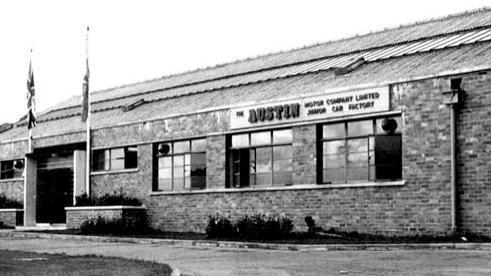
The factory in Bargoed where the Austin Motor Company benefitted from a government scheme to rehabilitate ex-miners
At about the same time, Dr Whyley said, the Austin Motor Company was desperate to find a new export product with high added value, having been set a target of accruing 70% of sales to help rebuild Britain's war-shattered economy.
"They had to come up with something which was relatively cheap to manufacture, but which could command a premium price.
"The pedal cars - based on their full-size Austin A40 Devon - could utilise scraps of leftover material but would be, in the words of Austin's chairman Leonard Lord: 'Something which every Hollywood star's child will be pictured playing in'."
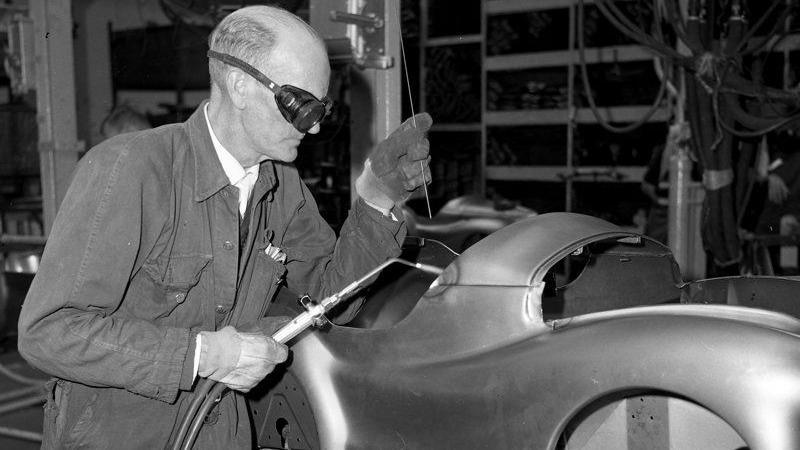
Men who had worked down the mines were employed to assemble the cars
Special jigs to support the weight of the pedal cars during production, among other adaptations, were designed to aid the former miners.
But concerns remained over whether the workforce would be up to the task.
Austin did not need to worry, as the workers more than proved their worth.
"These men were used to hard work and, from their time underground, they were accustomed to finding solutions to novel problems," Dr Whyley added.
"They turned their hands to steel fabrication, welding, electrics... even upholstery."
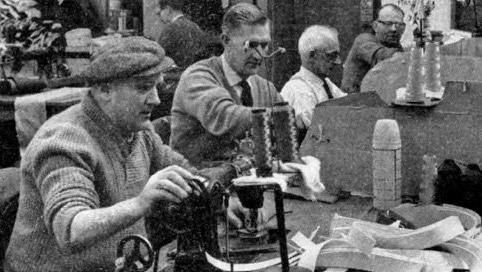
Men learned skills as varied as wiring to sewing at the Bargoed plant
Dr Whyley said workers started producing parts for real cars as well as the pedal ones and "for most of the factory's existence, it was the only profitable arm of the company".
The pedal cars' attention to detail was exquisite.
The dials, dashboard and steering wheels were exact miniatures of the Devon's, mock spark plugs were sourced from duds on the Longbridge production line, drive only went to the rear right wheel to allow the left to spin at a different speed during "high-speed" cornering and the handbrake was said to be strong enough to prevent a full-size car from rolling down a hill.
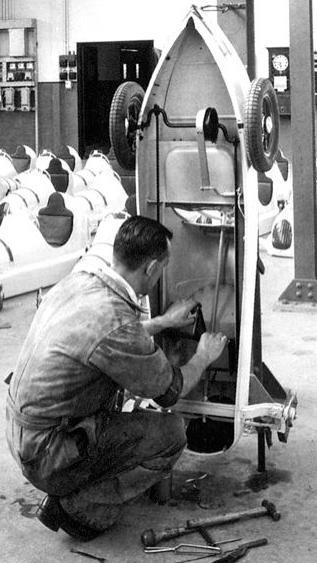
This shows assembly of the various items, including the parking brake which, when operated, pulls a band round a drum on the rear axle.
There were, however, two problems.
Dr Whyley said: "It weighed over six-and-a-half stone, so unless you were a particularly odd six-year-old with the calves of Jack Grealish, you'd probably need a push off the line from your parents.
"Also, at £25 it cost around four or five weeks' wages for an average worker. I had my nose pinned to the display in a Birmingham toy shop from a lad, but I was well into adulthood before I could afford one for my two daughters."
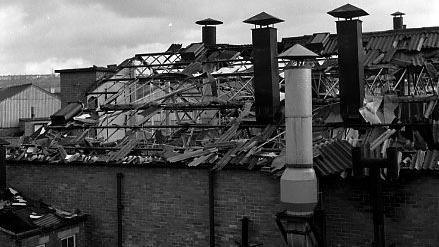
The roof of the Bargoed factory was blown off in an explosion in 1962
The ex-miners went above and beyond when, on 11 January 1962, a gas explosion blew the roof clean off the factory.
Thanks to their quick-thinking it was up and running again inside a week.
Fourteen men were injured - six seriously - one who suffered face and hand burns refused medical attention until he had rescued his colleagues, while another clambered through the rubble to turn off the gas mains and douse the flames with a fire extinguisher.
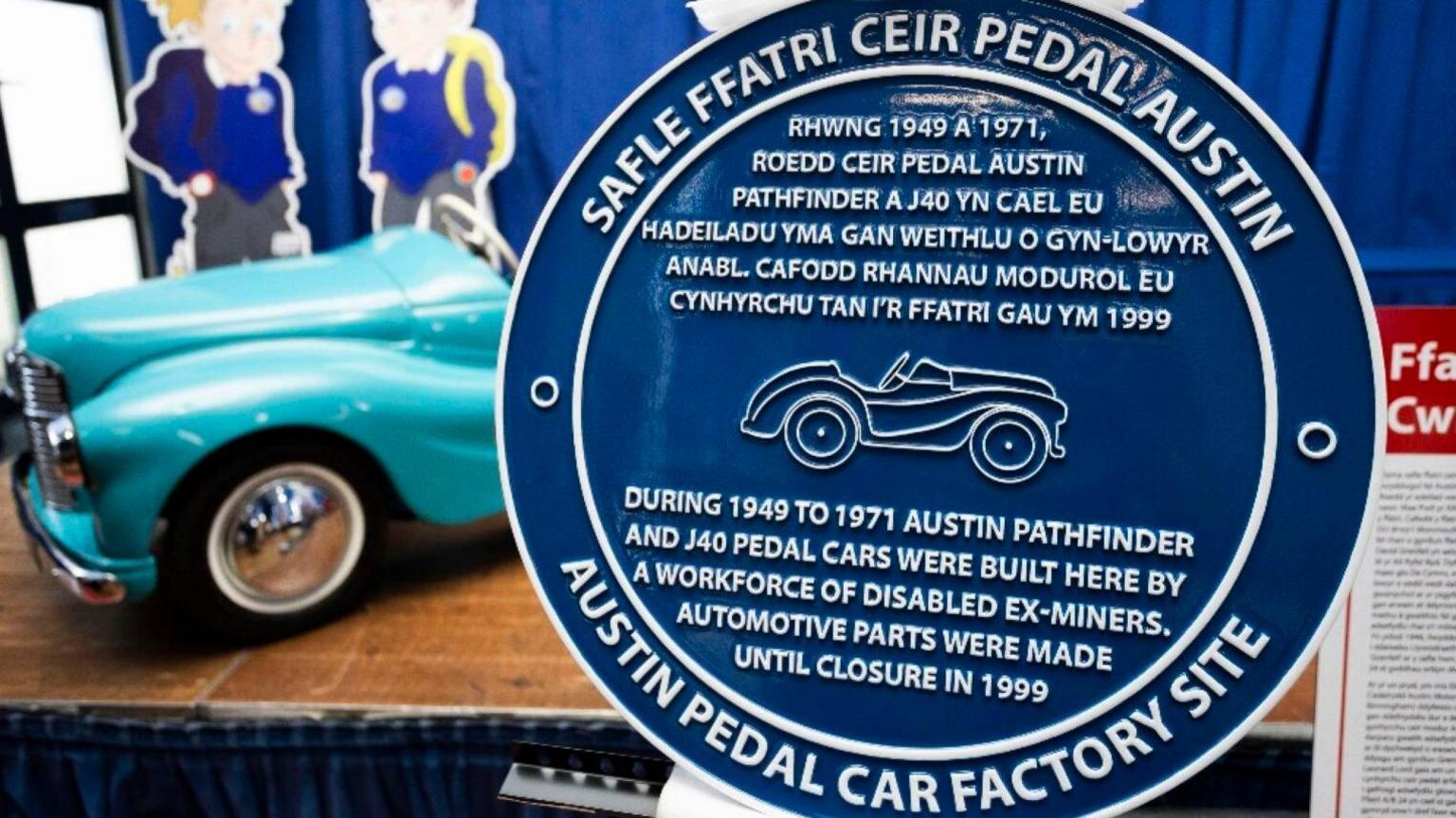
The Blue Plaque will commemorate the ex-miners who built the Austin pedal cars
After 22 years and 32,098 cars, in 1971 it was decided the Austin Pedal Car could no longer compete with cheaper imports.
Nonetheless, there remains a thriving Austin Pedal Car community, with the new company supporting the Settrington Cup J40 Grand Prix each year for youngsters at the Goodwood Revival.
Related topics
- Published19 November 2019
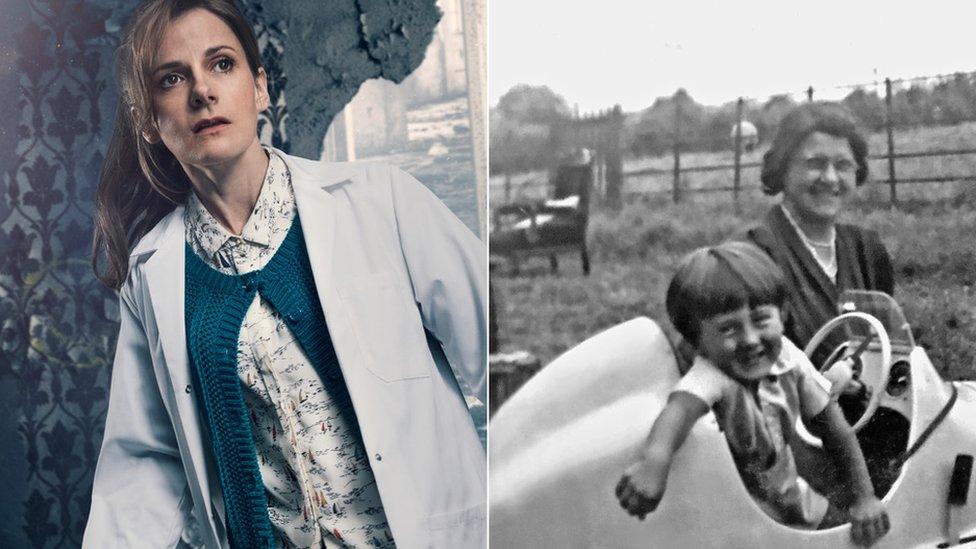
- Published14 August 2019
